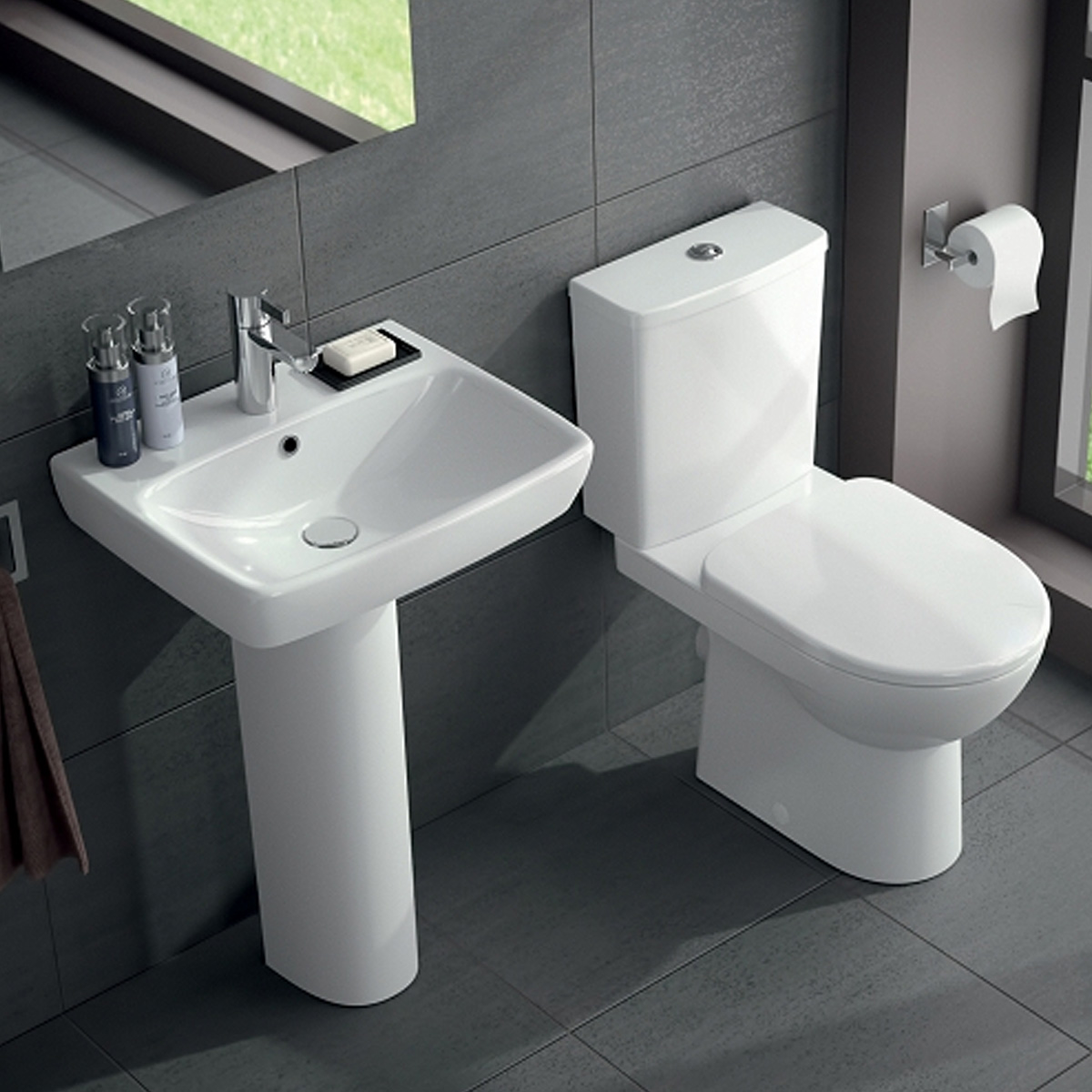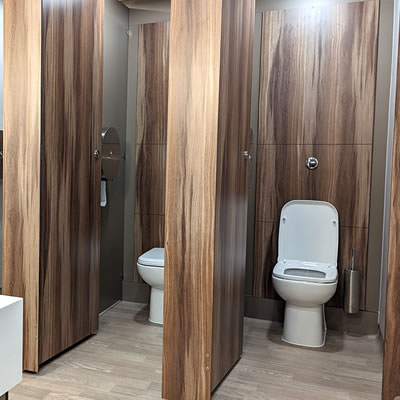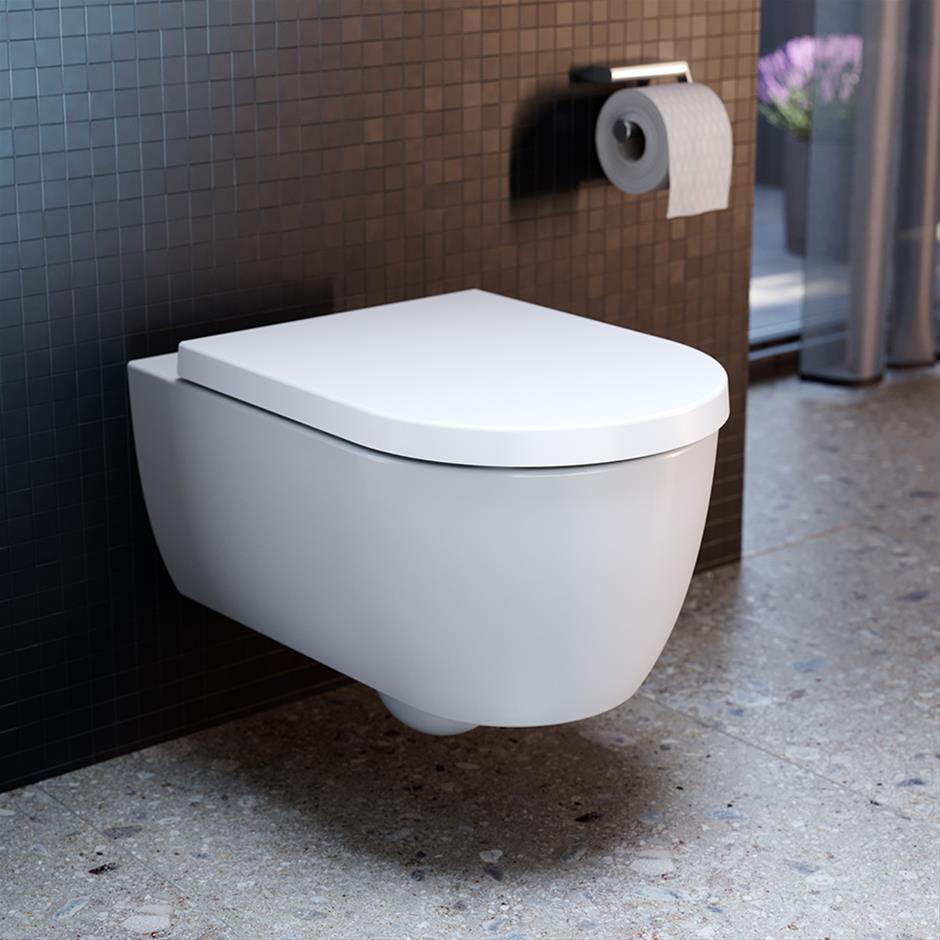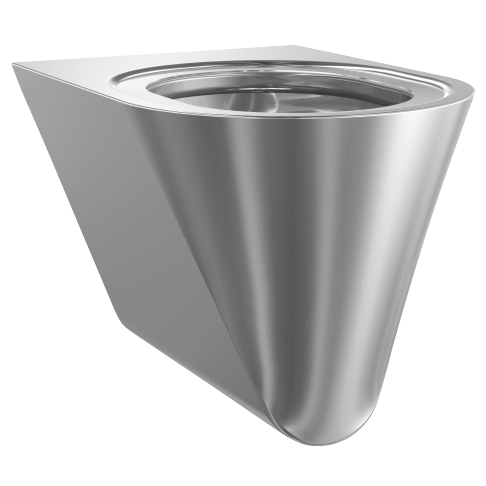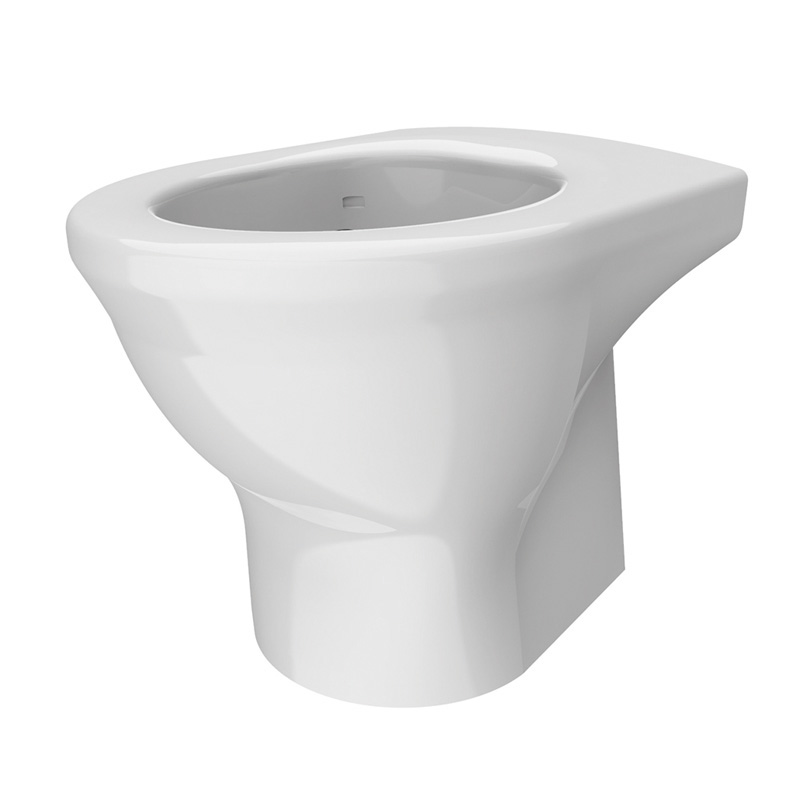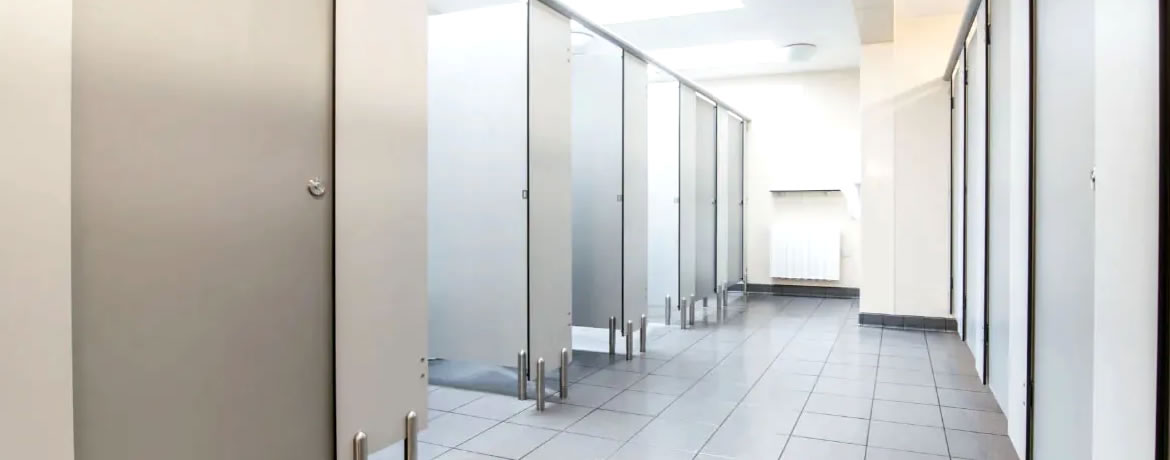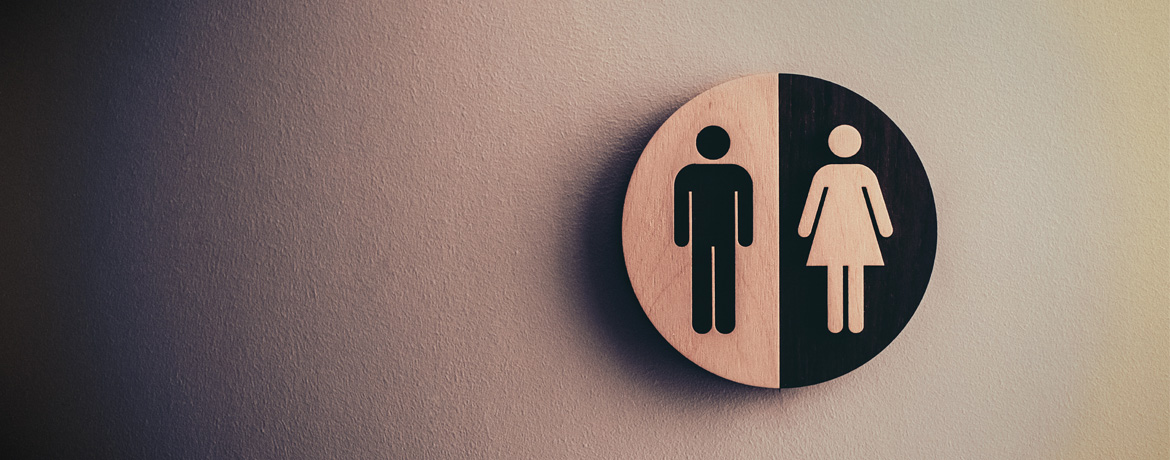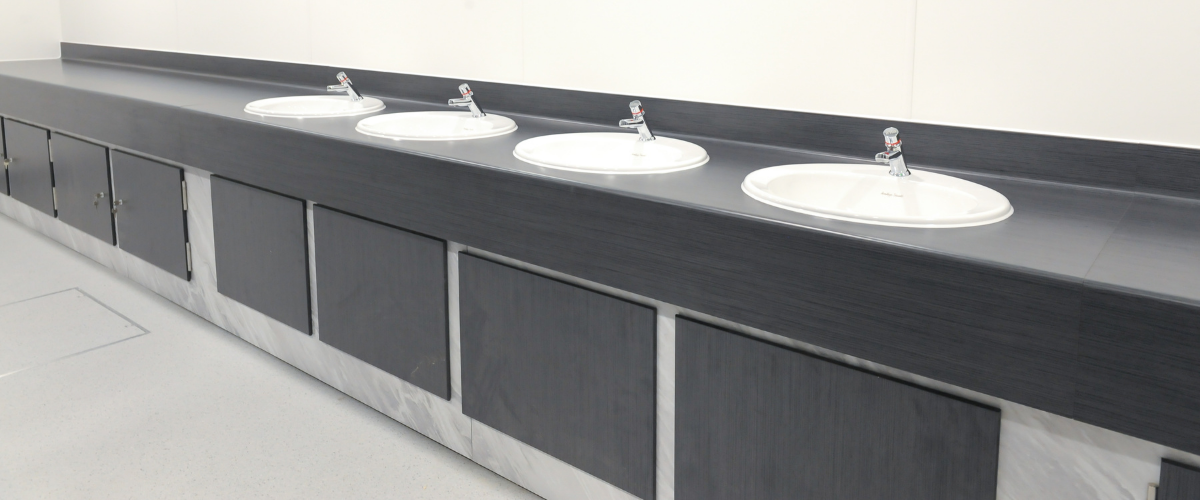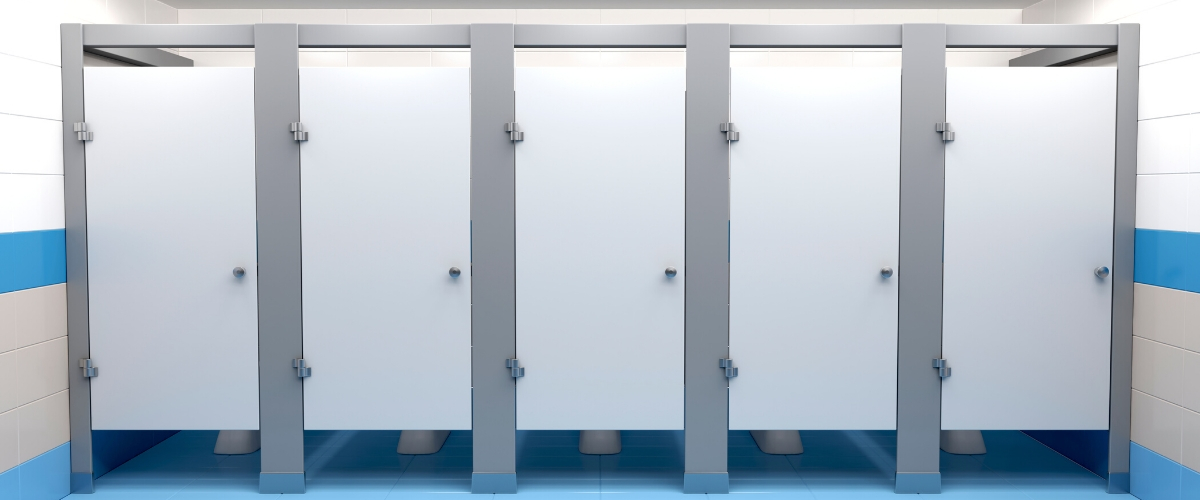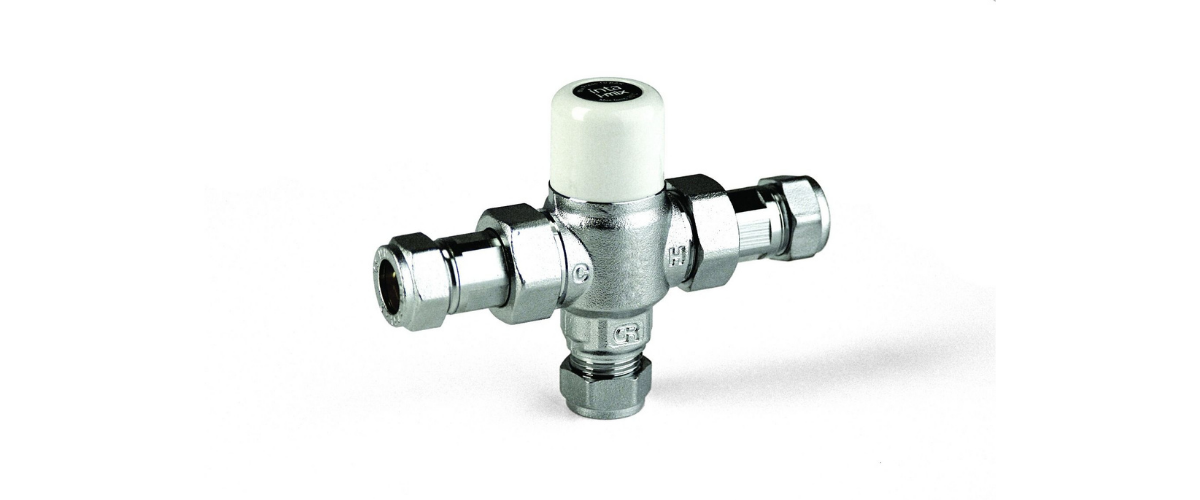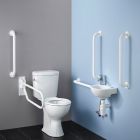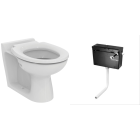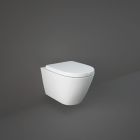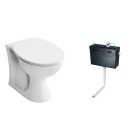What are the different types of toilet?

It can be challenging to determine which toilet to choose for your washroom, especially with numerous types available. This article will simplify the process by breaking down the main types of toilets available.
At Commercial Washrooms, we collaborate with a range of leading sanitary ware manufacturers. You’ll find brands like RAK, Twyford, and Armitage Shanks, but rest assured that all of the toilets we have available are suitable for commercial environments where durability and reliability are key.
Further Reading: Superloos, Doc-M, Changing Places - we explain the different types of washrooms
Low-level toilet
Low-level toilet: The cistern is positioned on the wall just above the pan, and a short length of plastic pipe connects it to the toilet. The toilet is flushed using a lever handle or push button on the cistern.
Close-coupled toilet
Close-coupled toilet - the cistern is mounted on the back of the toilet pan and can be flushed using a handle or push-button, located on the cistern. Close-coupled pans can project further away from the wall in comparison to low-level systems.
Back-to-wall toilet
Back-to-wall toilet - the concealed cistern is located behind a panel or wall, designed to conceal the cistern and waste pipes. The toilet is fixed to the floor and is positioned against the panel or wall. The toilet can be flushed using a sensor flush kit, a lever flush, or a push-button flush; each can be located through the IPS panel or wall to activate the concealed cistern.
Office Toilet
Office Toilets is another way to refer to Back-to-Wall Toilets. Office Toilet Cubicles are high traffic, and a Back-to-wall Toilet allows for easier, more hygienic cleaning of the floor and the pan.
A concealed cistern is located behind a panel or wall, designed to conceal the cistern and waste pipes. The toilet is fixed to the floor and is positioned against the panel or wall. The toilet can be flushed using a sensor flush kit, a lever flush, or a push-button flush; each can be located through the IPS panel or wall to activate the concealed cistern.
Wall-hung toilet
Wall-hung toilet - the cistern is located behind a panel or wall, which is designed to conceal the cistern and waste pipes. The toilet is fixed flush to a panel or wall using metal brackets and is suspended clear from the floor. Wall-hung pans offer a modern feel to a premium washroom.
Rimless toilets
Toilets without rims are used for several reasons. You may find them in hospitals or areas where hygiene, infection prevention, and control are of high importance. Because there is no rim, they are easier to keep clean. They are also used in institutional settings like prisons, as the rim is often an area where contraband can be hidden.
Squat pans
Squat pans are floor-based toilets that you might have seen throughout Europe and Asia. The unit has two areas to place your feet, which sit on either side of a bowl that is usually counter-sunk into the floor. This unit is flushed back into the drains and can be useful for areas where vandalism is a high concern.
Peninsular toilets/Doc M
Peninsular toilets is more about where they are located in the room, than what they look like. The idea is that they protrude into the room like a peninsular, leaving around a metre of space on both sides and at the front of the toilet pan. This is most prevalent in disabled washrooms that comply with Document-M of Building Control. Peninsular toilets ensure enough room for users to access and transfer to the toilet efficiently without being too cramped.
Vandal-resistant toilets
Every commercial wash space needs to consider misuse. The level of vandalism threat will depend on users and location. You might choose a stainless steel toilet and sanitaryware, but many sites also use toilets and washbasins made from high-grade resin which is frequently used in prisons.
Children's toilets
In School Toilets and daycare environments, toilets need to be at a lower level so that little ones can access them. We have a diverse range of low-height toilet pans specifically designed for these areas. These enable children to feel safe and develop independence and personal hygiene in early years settings. They are available as toilet packs or single toilet pans.
Disabled toilets
Providing toilets for disabled users is important, and we can help you with a variety of different options. Toilet pans are generally at a higher level to aid the transition from wheelchairs and to make sitting down and standing up easier for adults with mobility issues. You may also choose to get a full Doc-M pack, which contains all the items you need to create a disabled washroom that complies with Document-M of Building Regulations.
High-level toilets
Whether for a disabled washroom or making toilet pans more accessible for the elderly, increased-height toilets are generally easier for grownups with mobility issues. They can also be paired with grab rails and used in dedicated disabled washrooms and ambulant disabled washrooms.
Stainless steel toilets
Toilets made from stainless steel are often used where vandalism occurs frequently. Stainless steel can’t be broken or smashed. You will often employ stainless steel toilets in public washrooms, prison washrooms and rehabilitation centres.
Resin toilets
Resin toilets are used in areas where misuse and vandalism are likely to occur but also in institutional settings where users may be at risk of injuring themselves. Resin is a resilient and hard-wearing material that can be used instead of stainless steel.
Getting the right advice
Our team can offer specialist advice on using the right toilets to use in various environments. So whether you are unsure which infant or child's toilet to use in a school refurbishment project, need help on the most hygienic toilet for a hospital outpatient building, or would like advice on a designer wall-hung toilet pan for a corporate office development, feel free to contact the team for independent specialist advice
As always, our team is available by telephone for all your queries and questions and has a wealth of knowledge they’re happy to share. So, if you need some guidance or would like to discuss your options, you can give them a call at 01202 650900.
Prefer email? Get in touch
MORE TO EXPLORE IN Related Posts

Armitage Shanks Sandringham 21 Close Coupled Toilet with Lever or Push Button Flush (E8963)
As low as £97.20 £81.00

Pland Istanbul Stainless Steel Toilet Squat Pan
As low as £648.00 £540.00

Armitage Shanks Doc M Contour 21+ Peninsular Care Pack
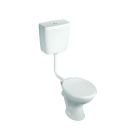
Armitage Shanks Sandringham 21 Magnia Low Level Toilet Pack
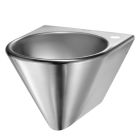
Delabie BOB Stainless Steel Wall Mounted Basin

Delabie Black S21P Floor-Standing WC Pan

Delabie MONOBLOCO Black S21 Close Coupled Toilet
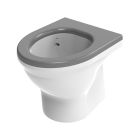
Dudley Resan Standard Height Back to Wall Vandal Proof Toilet (V3) with Grey Seat
As low as £1,042.80 £869.00

